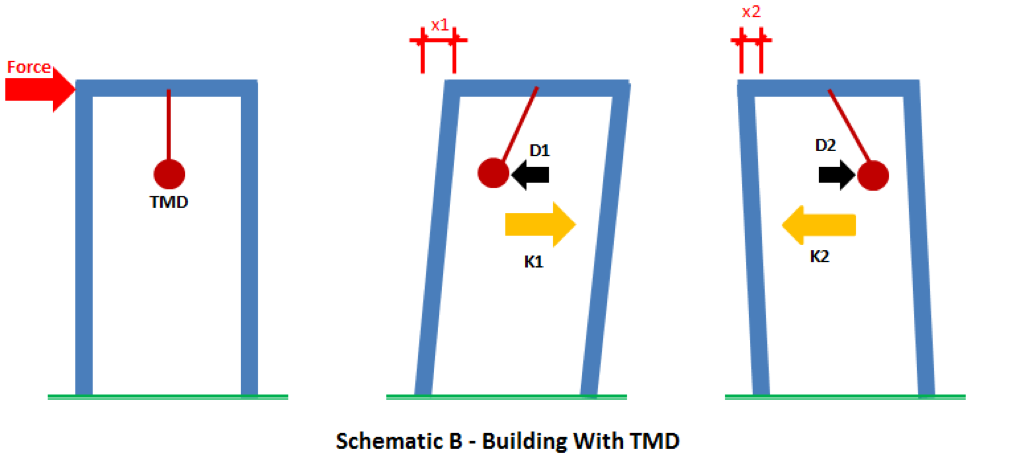Yes, if you happen to live on the hundredth floor. Tall buildings oscillate up to few meters due to wind and earth-quack. It may be uncomfortable for dwellers. It may even be dangerous. There is a physics technique to prevent this vibration.
Tall towers can be considered as an inverted pendulum. It will oscillate with its own natural frequency due to natural forces. Now select a pendulum of the same frequency and attach a suitable weight. Hang this pendulum in the top portion of the tower. When the tower swings in one direction, the pendulum will swing in the opposite direction. That is, tower and pendulum will execute opposite oscillations. Hence the building's energy will be dissipated through the pendulum and the swings of the building will come to a stop (damped) quickly. Hence this pendulum is called 'Tuned mass damper" (TMD). [Matching the frequencies is called tuning].
In Taiwan, there is a skyscraper by name Taipei-101. It has 101 floors. There is a TMD. It weighs 660 tonne -the world's biggest. It is a tourist attraction and also has a Muscat. The oscillations of this TMD during an earthquake has been vidoegraphed and the video clip is available on the net.
TMD was also used in standing rockets to arrest the vibrations. It is used in ships for stability. TMD is also found in Mobile towers, electrical cables, electrical towers (pylons), cars and so on.
It is etched in our minds that our concrete houses are fixed to the ground. But, sometimes it is not.
---------------------------------------------------------------------------------

